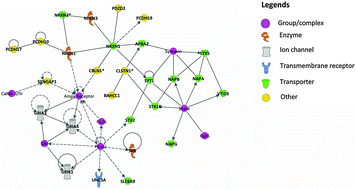Embryonic exposure to 10 μg L−1 lead results in female-specific expression changes in genes associated with nervous system development and function and Alzheimer's disease in aged adult zebrafish brain†
Abstract
A developmental lead (Pb) exposure has been proposed as an environmental risk factor for adult neurodegenerative diseases including Alzheimer’s disease (AD). Recent animal studies showed pathological characteristics of AD in adults with a developmental Pb exposure, but additional studies are needed to investigate this phenomenon. To further assess the relationship between an embryonic Pb exposure and latent neurological alterations, the brain of adult female and male zebrafish aged 12 months that were exposed to a control treatment or 10 μg L−1 Pb only during embryogenesis (1–72 hours after fertilization) were analyzed on a zebrafish-specific microarray platform. Gene ontology and pathway analysis revealed similarities in the top disease and functional categories in both sexes, but females had 4.3 times more genes altered than males. In addition, alterations in genes associated with nervous system development and function were more pronounced with a set of 89 genes associated with AD including amyloid precursor protein (APP), apolipoprotein (APOE), and sortlin-related receptor precursor (SORL1) observed to be changed in adult females. Our observations suggest that an embryonic exposure to Pb at levels as low as 10 μg L−1 disturb global gene expression patterns in a sex-specific manner that could lead to neurological alterations in later life. With these findings, future studies investigating the adverse neurological outcomes of these changes in gene expression will facilitate our understanding of the impact of an embryonic 10 μg L−1 Pb exposure on neurological disease pathogenesis and the inclusion of additional concentrations will broaden our knowledge of dose-dependent changes.

- This article is part of the themed collections: Alzheimer's Research Month 2016 and Neurochemistry of lead and manganese

 Please wait while we load your content...
Please wait while we load your content...